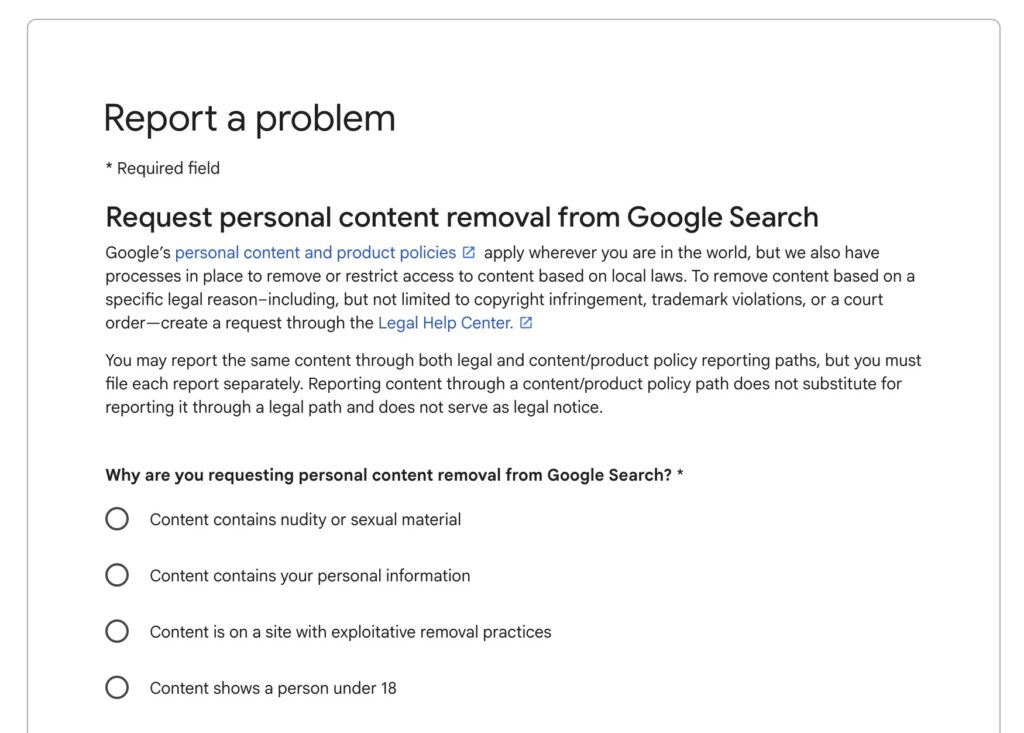A short list of what you need to do first as soon as your intimate photos fall into someone else’s hands.
1. Stay Calm and Document Everything
Although panic is a natural reaction, your first step should be to preserve evidence. Take screenshots of the leaked images, URLs, usernames, and any messages associated with their distribution. This evidence will be critical for reporting, legal action, or content removal requests.
- Take clear screenshots (include URLs and timestamps).
- Note the platforms and usernames involved.
- Do not engage directly with the person who leaked them.
2. Report and Request Your Leaks Removal from Platforms
Most reputable platforms have strict policies against non-consensual intimate image sharing. You can usually report the content under “sexual exploitation,” “non-consensual intimate imagery,” or similar categories.
- Use the platform’s reporting tools immediately.
- Provide URLs, screenshots, and context clearly.
- For search engines like Google, use the Non-consensual intimate imagery removal form.

3. File a Legal Complaint or Police Report
In many jurisdictions, leaking intimate images without consent is a criminal offense. Laws differ depending on where you live, but police cybercrime units often treat these cases seriously.
- Bring your evidence when filing a report.
- If applicable, consult a lawyer to understand your rights.
- Request any restraining orders or legal takedowns if needed.
4. Use Specialized Takedown Services
If the content spreads beyond mainstream platforms, consider contacting cyber civil rights organizations or professional takedown services that specialize in removing intimate content from websites, forums, or search results.
- Cyber Civil Rights Initiative (U.S.) CCRI https://cybercivilrights.org/
- Internet Watch Foundation (UK/EU) https://www.iwf.org.uk/
- Trusted flaggers recognized by Google and Meta:
5. Protect Your Digital Security
Leaked images sometimes come with hacking, stalking, or impersonation attempts. Strengthen your online defenses:
- Change passwords and enable two-factor authentication.
- Check if your personal data has been exposed on breach databases (e.g., haveibeenpwned.com).
- Be cautious with suspicious messages or “friends” online.
6. Seek Emotional and Psychological Support
Being a victim of a nude leak is a serious violation. Many people experience anxiety, shame, or fear. Remember: you are not at fault. Consider speaking to a trusted friend, therapist, or joining support groups that help victims of image-based abuse.
7. Plan for Future Protection
While no one can guarantee absolute safety online, you can reduce risks:
- Review privacy settings on all social media accounts.
- Think carefully before sharing intimate content digitally.
- Consider using secure, encrypted apps if sharing privately.

Leave a Reply